Coffee grounds and cake as fertilizer for indoor plants
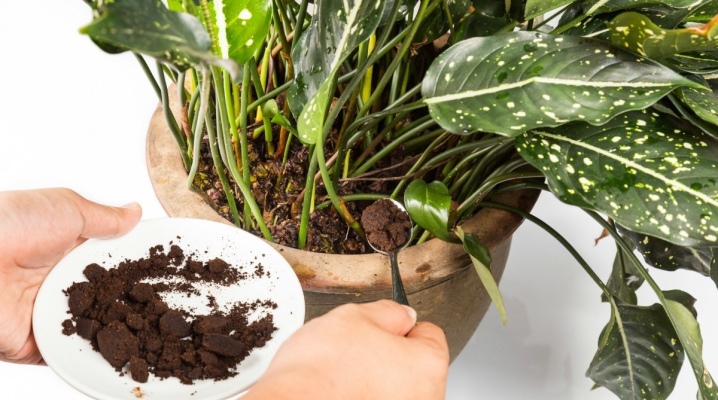
Coffee is not only one of the most popular drinks, but it can serve other purposes as well, such as fertilizing indoor plants. They are found in almost every home, and it is not always possible to maintain their freshness and health, and coffee grounds and cake are excellent for such experiments, since they consist of a lot of useful elements.
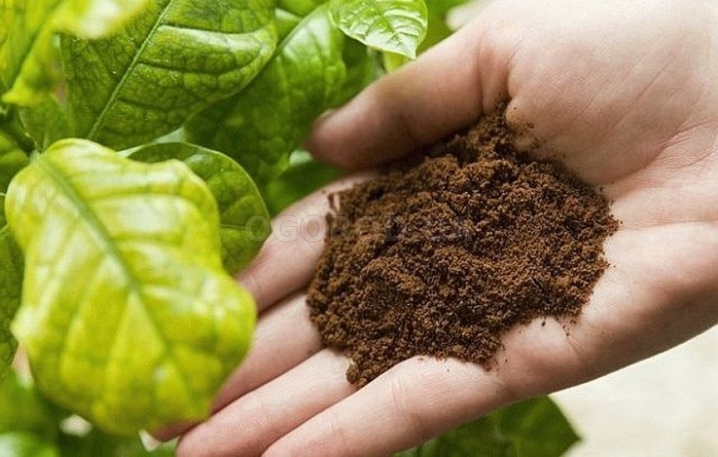
Beneficial features
The coffee drink contains nitrogen percentage 1.5%, which is equal to the amount of its presence in rotted herbs, and they, as you know, are organic fertilizers.
The raw materials also contain such chemical elements as calcium and magnesium, and phosphoruswhich plants need the most. The main task of these substances is to form ovaries, improve flowering, and also have a positive effect on the root system.
If houseplants bear fruit, the presence of trace elements in the soil contributes to the yield.
Nitrogen is a growth stimulant, positively affecting the development of plants. Calcium nourishes not only the root system, but the leaves and stem. Potassium essential for flowers that grow outdoors (or on balconies) to make them more frost-resistant.
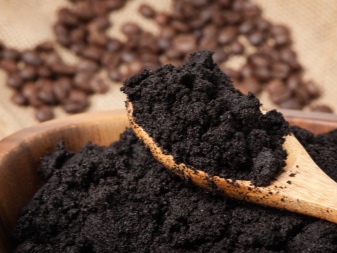
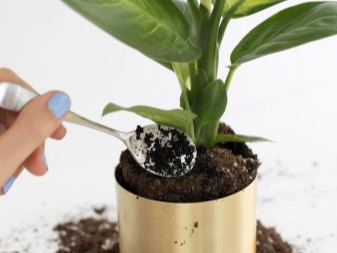
In addition to the listed elements, coffee contains copper, carbohydrates and ironso it is safe to say that this type of fertilizer is organic and will have a beneficial effect on indoor plants. If you want to furnish a room with flowers in pots, it is enough to use one ingredient to get a good soil that promotes flowering.
For a long time, it was believed that coffee grounds as a fertilizer can only be used on alkaline soils and for plants that need an increased acidity of the earth, since they thought that it increased it. but today, experts claim that coffee has neutral acidity, despite the fact that sometimes a taste is felt in the drink.
During the preparation process, the acid is washed out, therefore it is absent in the thickets - thus, this fertilizer will not affect the acidity of the soil.
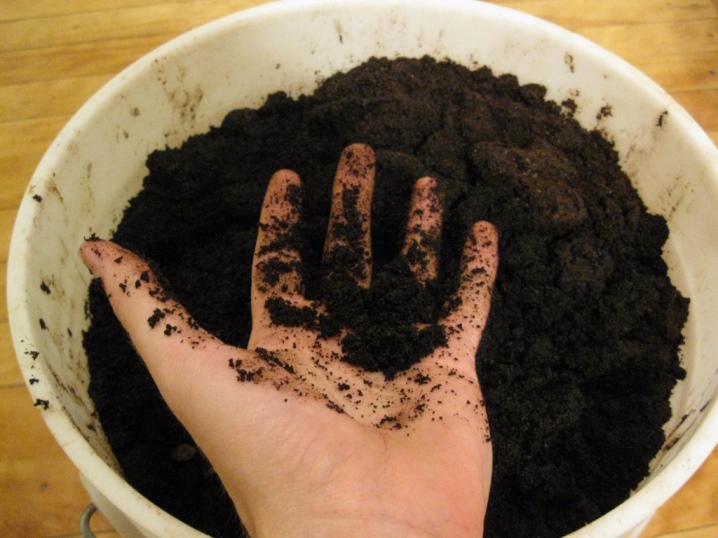
The advantage of coffee fertilizer is that due to processing, the soil becomes looser... This will allow a slight change in the state of the soil, which will become more susceptible and will be able to absorb moisture better. Thickness will also allow oxygen to easily penetrate through the porous soil into the root system, making loosening easier.
The smell of coffee negatively affects insects, so the midge will not attack the plant, and this problem is very common.
The cake nourishes the stems and accelerates the growth of flowers. And also he often performs the task of compost, which is used most often on outdoor plants. Of course, in order to get a positive result, it is necessary to properly prepare the fertilizer, apply it in certain proportions.
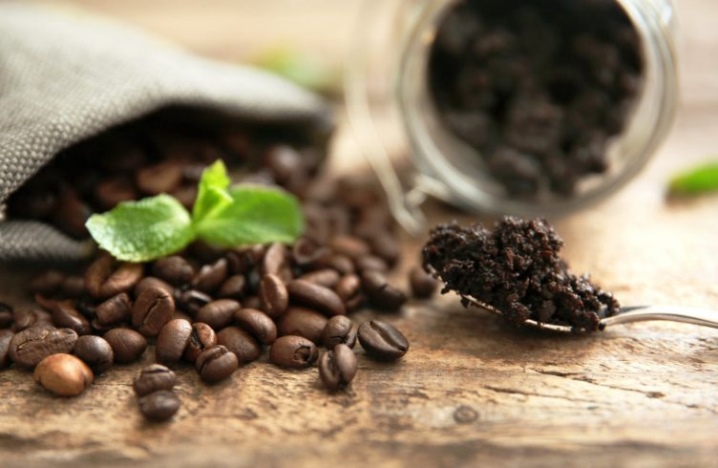
For which plants is it suitable?
There are representatives of the flora who are especially fond of coffee as a fertilizer. These include azaleas, ferns, begonias and common roses. As for other domestic crops, feeding will be useful only in small quantities, while it is important to observe the time intervals.
If you grow violets, love hydrangeas or are going to plant a house palm, coffee is suitable for fertilizing the soil in the spring, when the shoots are just beginning to develop.Re-adding is carried out every couple of weeks until the outside is completely warmer.
In rosaries, oil cake is actively used, which experts consider a universal remedy. Its main advantage is that fertilizer able to protect bushes from pestsincluding snails and ants. The solution of coffee is also used as a sprayer, so the decorative qualities of flowers will not be disturbed.
There is an opinion that some roses change color from coffee - and this is indeed the case. If we talk about pink shades, then after fertilization they will turn into purple.


How to cook?
To obtain a high-quality result, it is necessary to take a responsible approach to the preparation of this fertilizer. It should be noted that when the winter period begins, it is not necessary to introduce auxiliary components into the soil of indoor plants, because at this time they are at rest. Therefore, you can take up the unhurried preparation of top dressing, preparing fertilizer during the winter, which will then be applied in the first spring days.
Coffee grounds
Collect the coffee grounds after each drink you drink. If you brew a drink in a mug, there is waste at the bottom that you don't need to rush into the trash can. Set aside leftovers in a separate container for several days. After that, it is necessary to dry the grounds in the oven or in another dry place so that the moisture completely evaporates and the mold does not hit the future fertilizer.
In the case of using a coffee machine, the filters along with the waste are also dried, then they can be crushed and used.
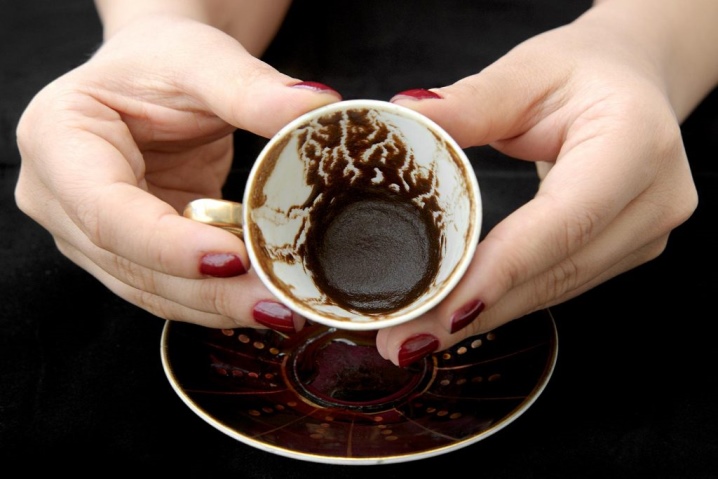
Cake
As for the cake, which remains after the processed ground coffee, you need to do a few manipulations.
- The raw material is sent to a dry container to be cleaned. This can be either a plastic bowl or a glass plate.
- To dry, plain paper is taken, on which waste is piled. It will take some time, but the result will be a finished fertilizer.
- If you have a summer cottage, coffee leftovers can be drained into a compost pit, where organic matter will take several weeks to cook.
You can prepare a special composition by taking 50% thick, 20% dry straw, and a little more foliage, which have been crushed beforehand. The ingredients are mixed and sent to a tank or other container, where they will be flavored. It is important to fill the top with earth, making holes for the oxygen supply. The fertilizer will be ready in a month, then it is added as food to the flower pots.
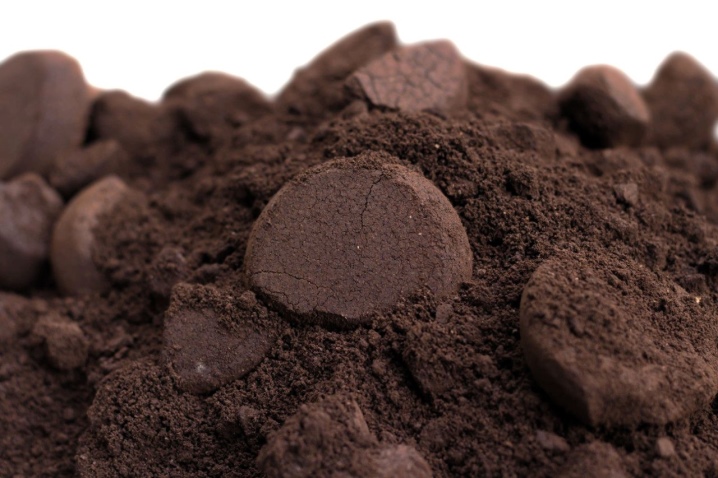
How to use?
A coffee bean contains many unique properties. Needless to say about the very aroma that fried raw materials have, because it can attract anyone. However, even after the mug is dry, you can use the waste for even more benefits. Insect pests, on the other hand, do not tolerate the smell of coffee. - if they smell it, they will not approach the plants.
There are several rules that will allow you to get the positive effect of fertilizing with coffee. Waste from a freshly drunk drink should not be used as watering for indoor plants. As already mentioned, the grounds must first be dried naturally or sent to the oven.
The nutritional supplement for flowerpots is applied as follows: it is necessary to water plants with it. It is important to take into account the size of the container where the flower will be planted.
Compliance with a strict dosage will have a positive effect on longevity and abundance of flowering.
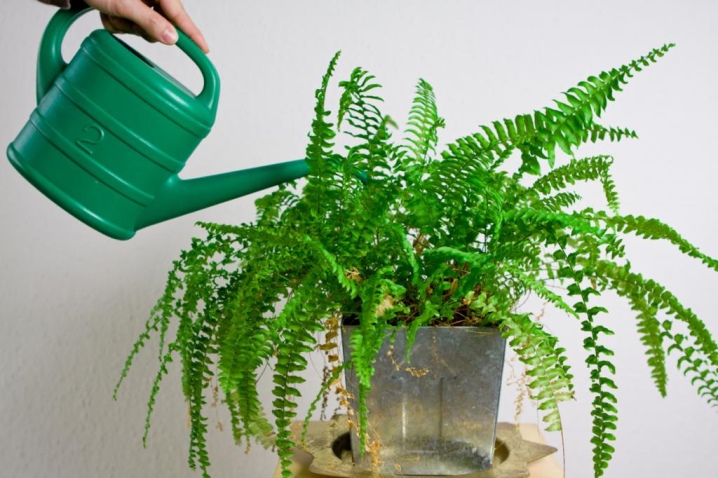
Fertilizer material can be diluted with water and irrigated to the root system. And also often the thick is sent to the very bottom of the pot, or is thoroughly mixed with the soil.
The cake is sent to flower containers in the following proportions: a third of the crushed dry foliage, the same amount of straw and coffee mass is mixed - and after 4 weeks the fertilizer will be ready.The nutrient complex lightens the clay mass, the earth will become loose, and it will be easier to feed it with moisture.
It is important to note that the thick must be used with knowledge, but at the same time they are not afraid to experiment, because this type of fertilizer can give an amazing result.
This fertilizer is actively used for outdoor plants. For example, tulips and peonies will be protected from slugs if you use sleeping coffee.
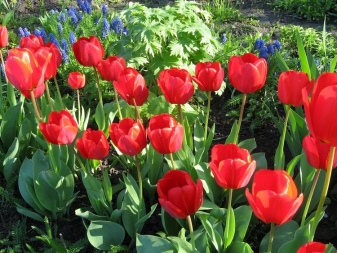
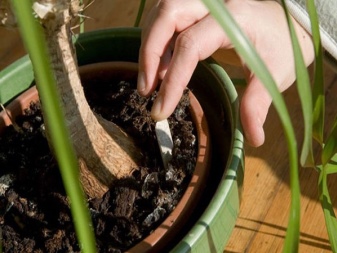
Summing up, we can say with confidence that it is not necessary to spend a lot of money on chemical fertilizers, which are offered in a rich assortment on the market. In every home there is coffee, albeit inexpensive, but natural, the waste of which can play a decisive role in the development of flowering plants. A few simple steps and a little time will soon give you beautiful plants that will delight the eye and enrich the room with oxygen. All that remains is to collect the raw materials, prepare it and fertilize the soil to make it fertile.
For information on how to use coffee grounds as fertilizer for flowers, see the next video.













The comment was sent successfully.